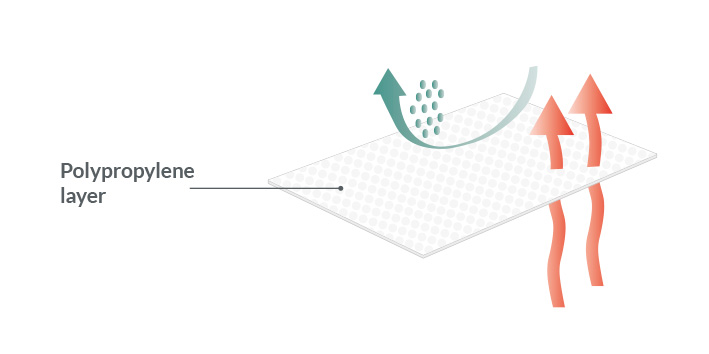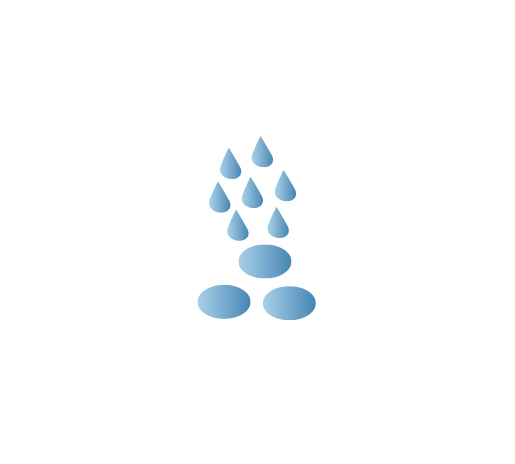M A T E R I A L S
Our materials:

LATEX
Latex is an emulsion with a milky appearance and gluey texture, consisting of rubber components that are normally in white colour, rarely yellow, orange or reddish. It is found in specific cells (laticiferous cells) of many superior plants (euphorbiaceae, papaveraceae, moraceae, composite asteraceae, etc.).
Latex has extraordinary and natural anti-bacterial properties, and it is undoubtedly the most elastic natural material known. An essential characteristic of this material is its natural and instant ability to go back to its initial shape after being subject to pressure or elongation. This is the reason why it is the best material for the production of disposable gloves. These extraordinary properties are only found in human skin.

NITRILE
Nitrile rubber is a synthetic rubber resulting from the copolymerization of acrylonitrile with butadiene. Its elastic properties come from its very long constituting molecules which, in rest conditions, are folded and can expand when subject to traction, eventually going back to their initial position as soon as stress is no longer applied.
Nitrile rubber shows very high resistance against the action of aliphatic hydrocarbons – which is not so strong with aromatic hydrocarbons – that are found in non polar solvents, oils and fats. It resists high temperatures up to 160° and it is sensitive to oxidation.

VINYL
Polyvinyl chloride, also known as PVC, is the most important polymer of the series obtained from vinyl monomeric polymers. It is one of the most widely used plastic materials worldwide.
Pure vinyl is a rigid material. Its versatility in application results from the possibility of blending it – even in high percentages – with plasticizers such as esters of phthalic acid, which make it flexible and malleable. It is considered as a stable and safe material in technological applications at ambient temperature.

PP
Polypropylene is a thermoplastic resin resulting from the polymerization of propylene. The chains in this polymer are fully extended and aligned one close to the other on the same axis.
The essential properties of polypropylene are: high rigidity and hardness, water repellency, resistance to both high and low temperatures, softness to the touch.

SMS
This is a special non-woven fabric consisting of three different polypropylene layers (Spunbond+Meltblown+Spunbond).
SMS tissue has excellent mechanical resistance properties in association with an efficient breathing capability and microbiological resistance to the permeation of particles and splashes.
When combined with additives, it also allows for the dissipation of surface electrostatic charges

LAMINATE
This is a special non-woven fabric resulting from the coupling of two materials: polypropylene in the inner layer and a polyethylene film in the outer layer. This is a lightweight and breathing material which is also suitable for use at high temperatures.
The combination of the two materials provides for an efficient protective barrier against the penetration of liquid and biological chemicals agents, and it contributes to the dissipation of surface electrostatic charges.

PE
Polyethylene is a thermoplastic resin. It is the most simple synthetic polymer and the most common plastic material. It is often identified with the acronym “PE”. Based on the distribution of molecular weights and the branching level, different types of polyethylene can be obtained having different properties and uses:
• Low density polyethylene (LDPE): having more branches than HDPE, this is a more ductile and less rigid material. Its flexibility and high resistance to shocks are largely appreciated.
• High density polyethylene (HDPE): the major features if compared to low density PE are high rigidity and hardness, and greater resistance to heat.
This material has excellent insulating properties of chemical stability. It is a very versatile material and it is one of the cheapest plastics.

CPE
Chlorinated polyethylene is produced by processing high-density polyethylene, exploiting the properties of chloride. CPE is a special plastic material with good ageing properties and resistance.
Key:

Basic dusts

Contaminating dusts

Liquids and Aerosol

Water vapour

